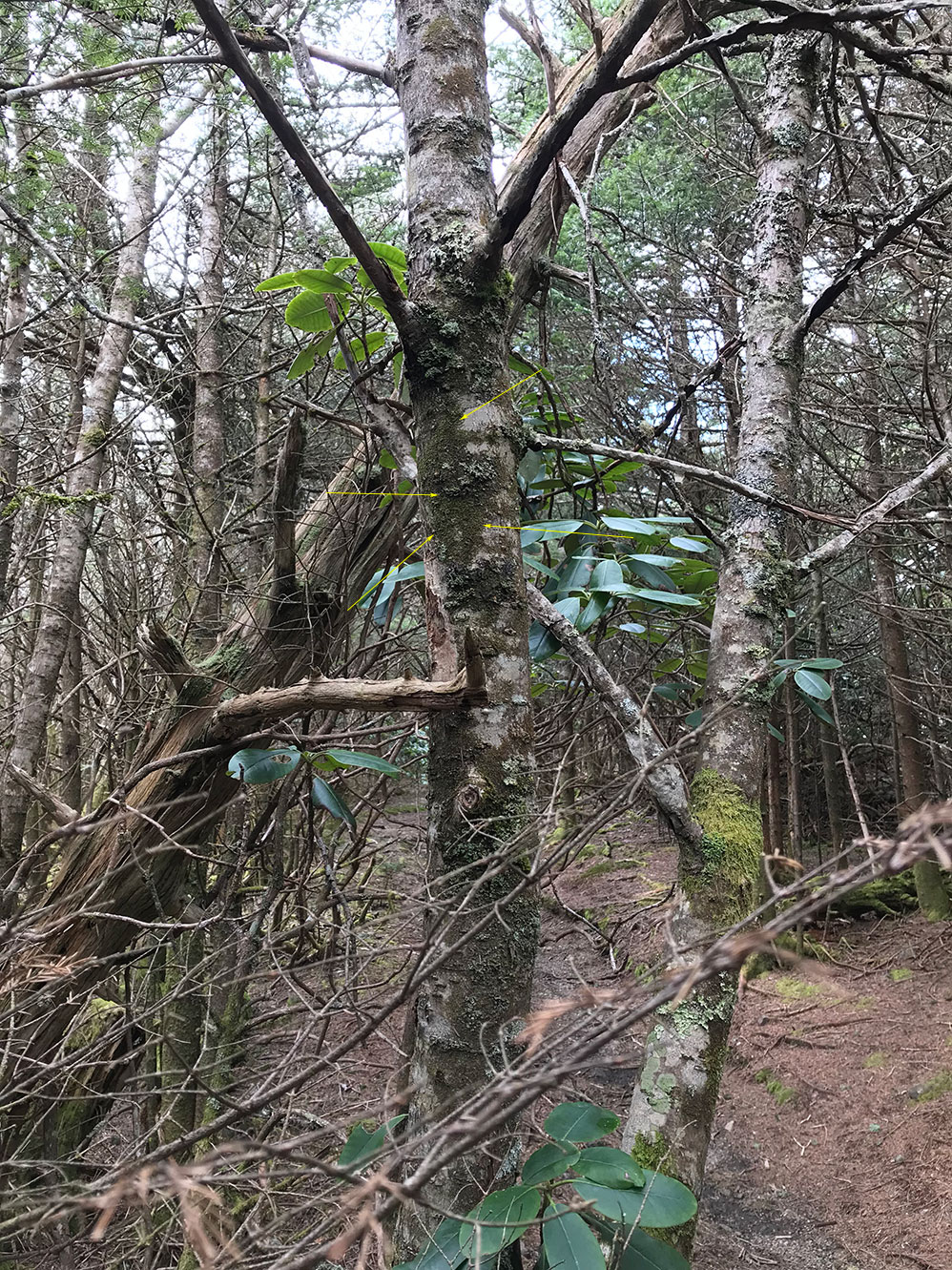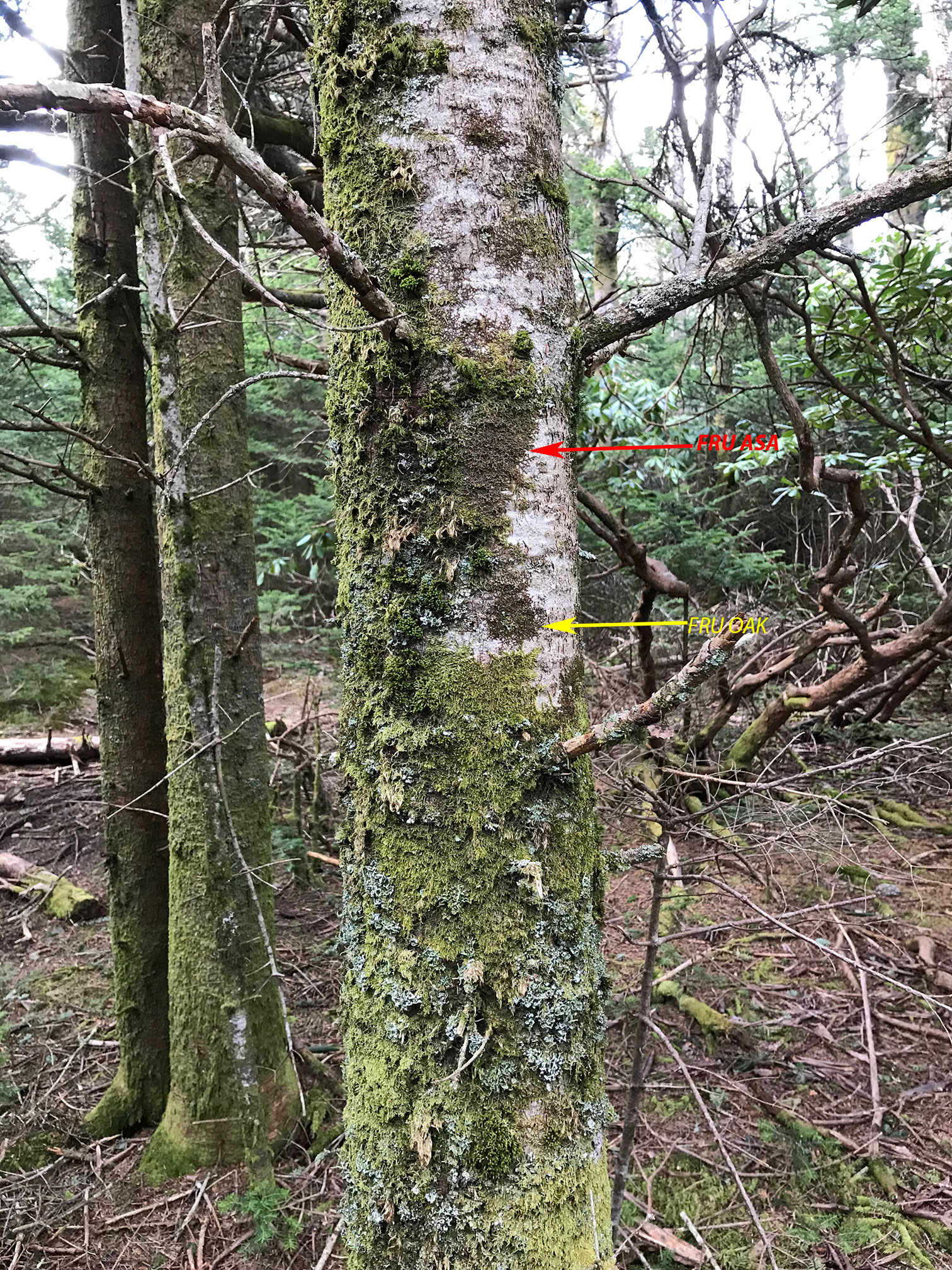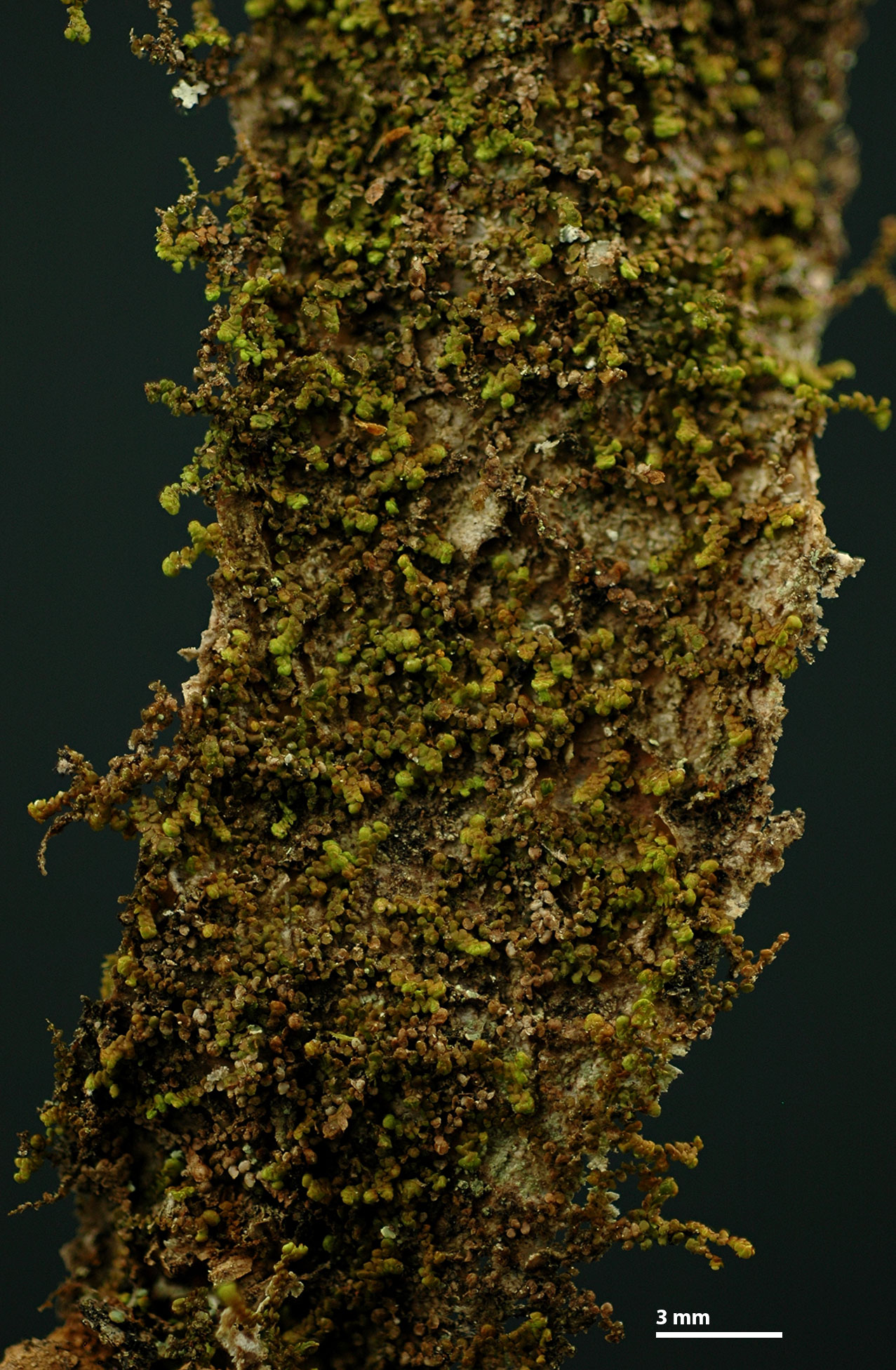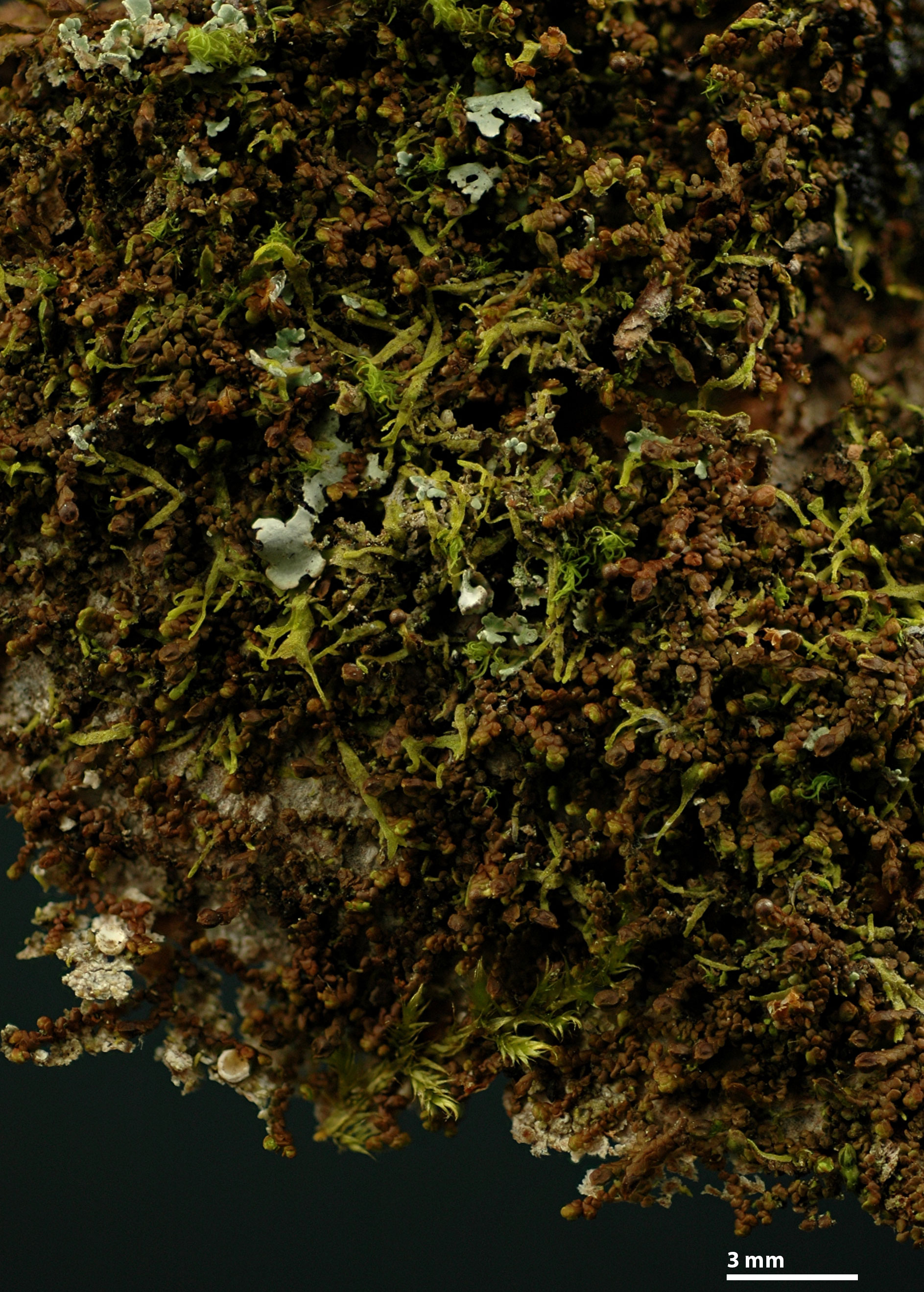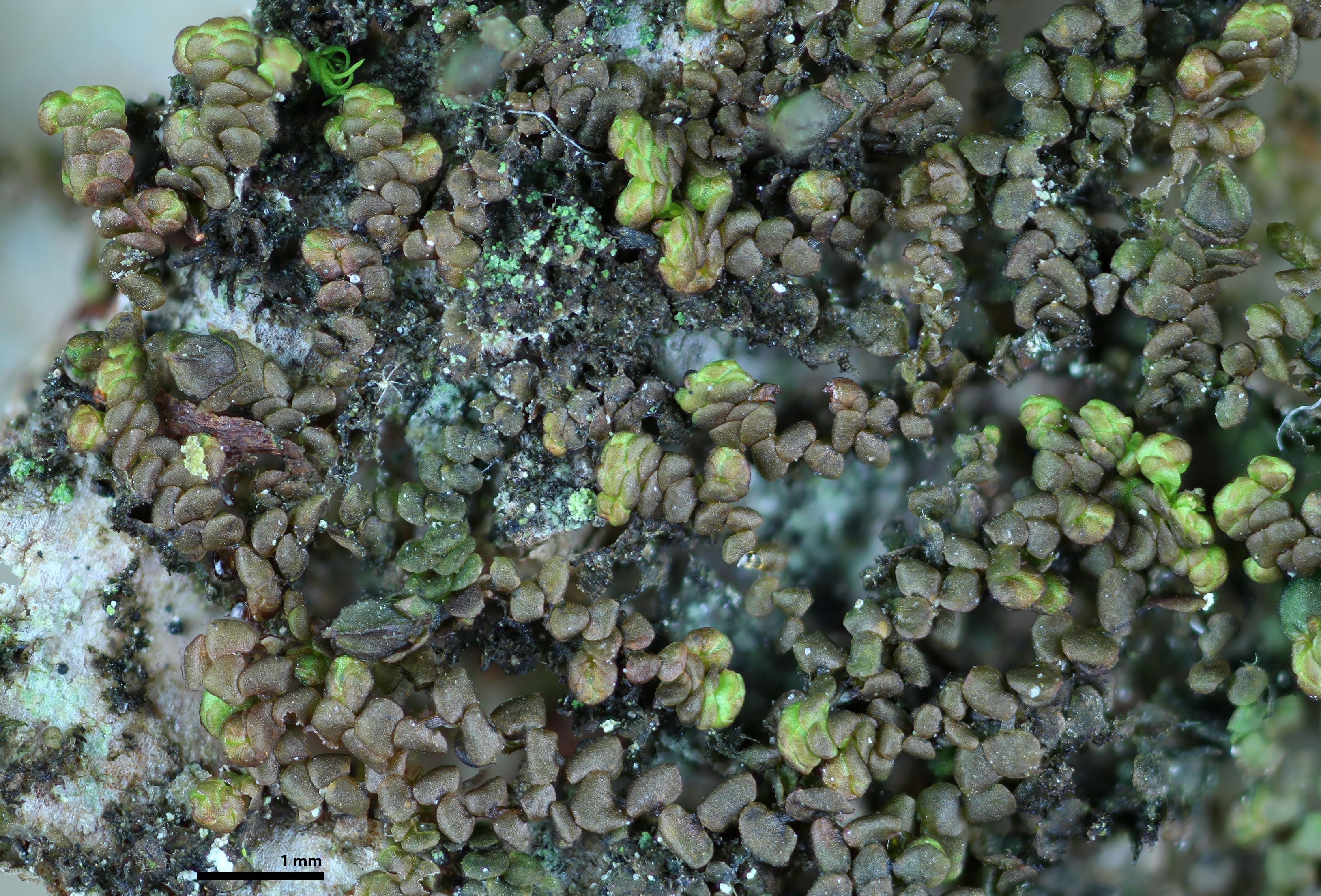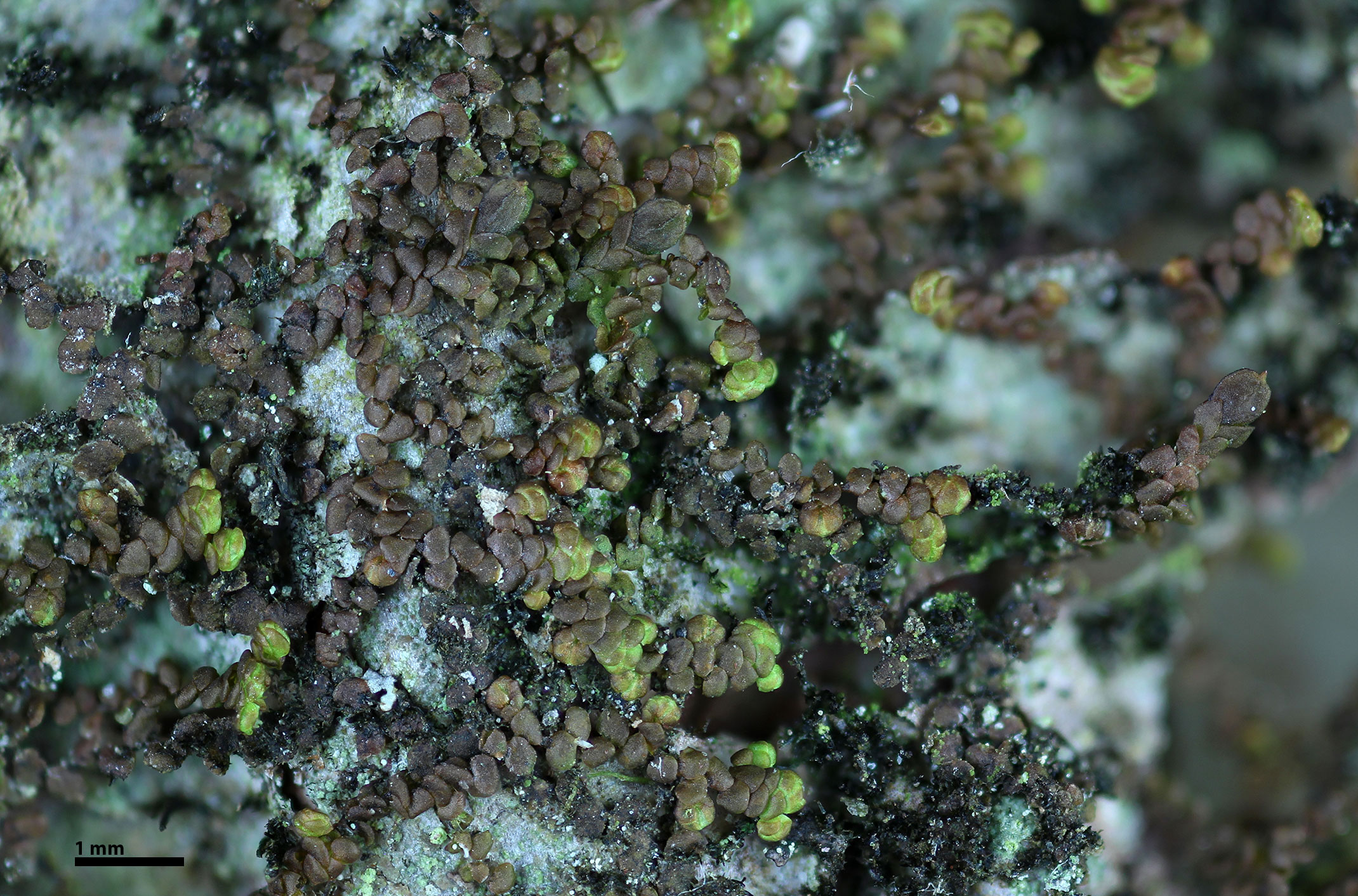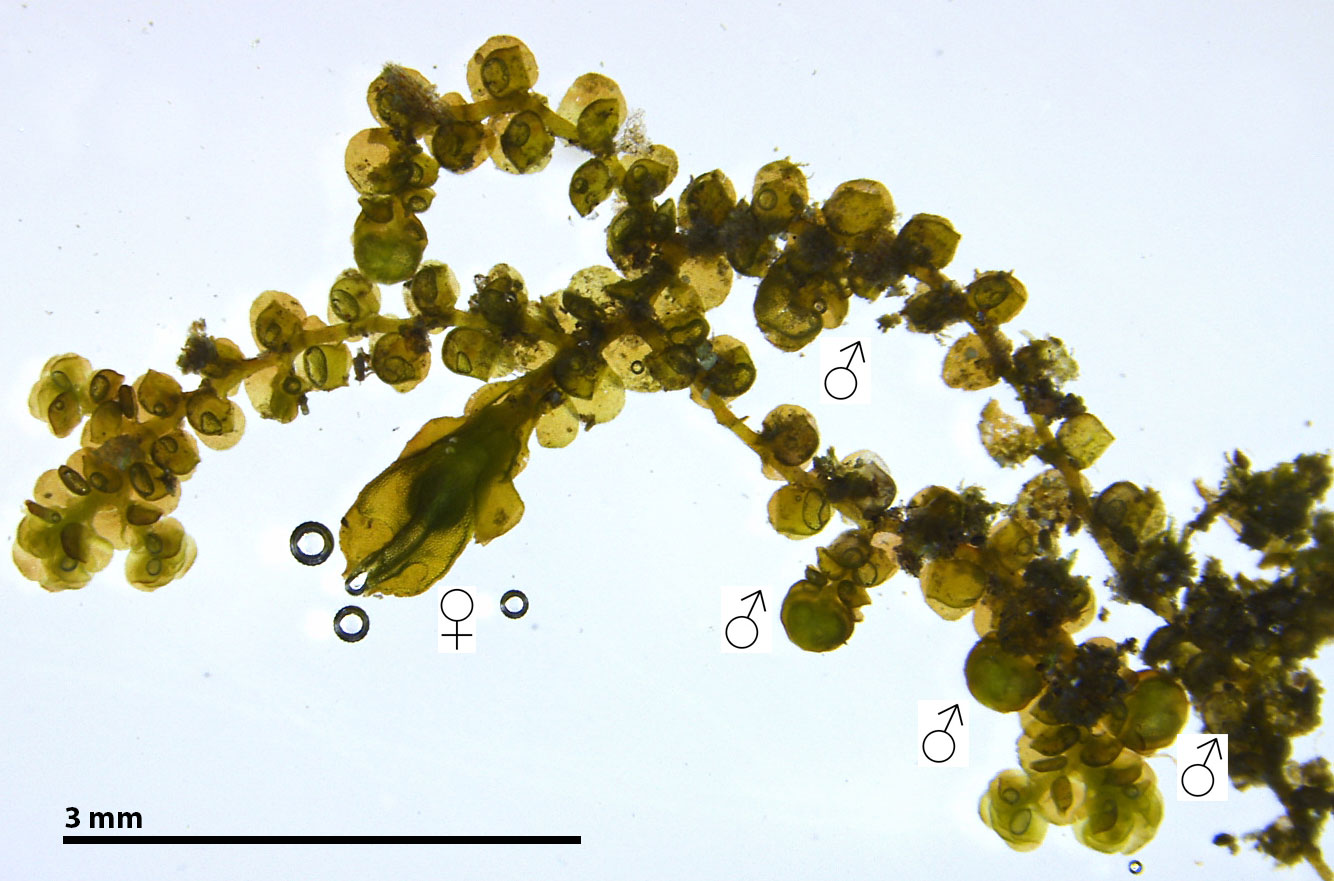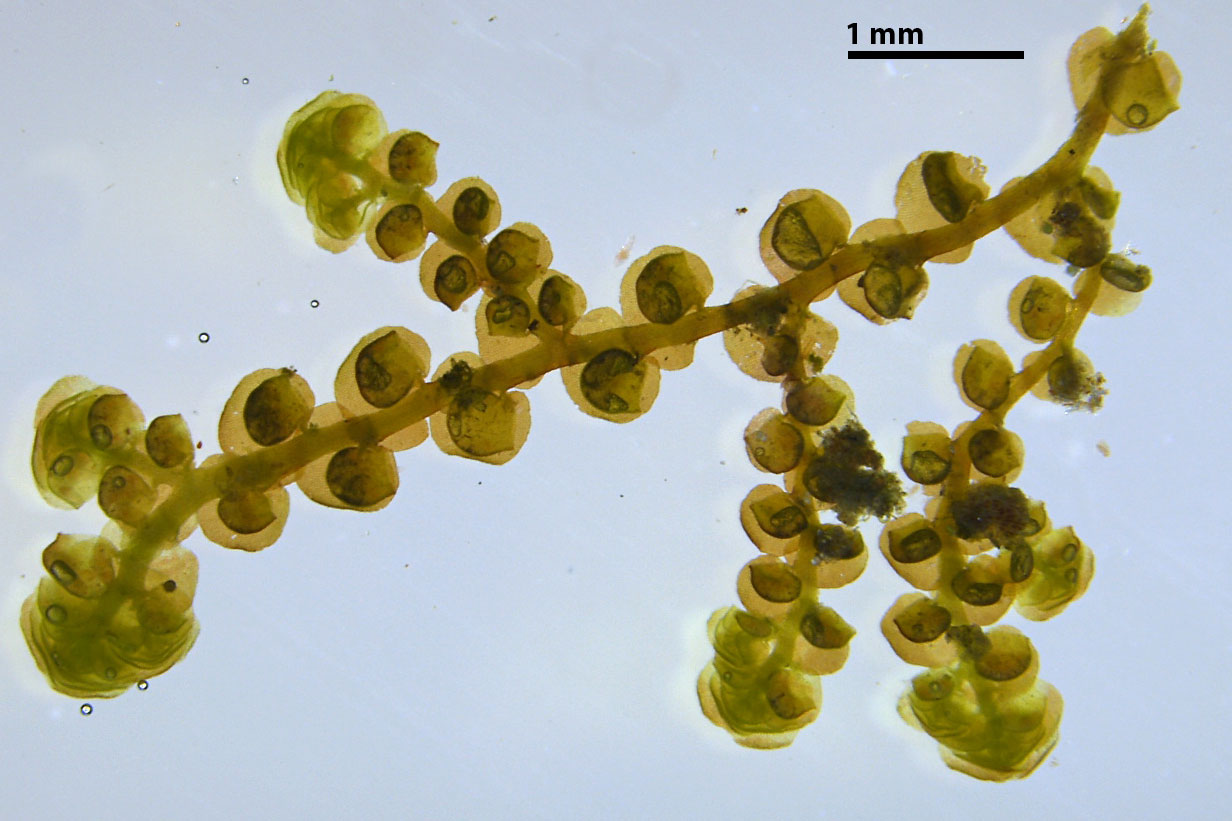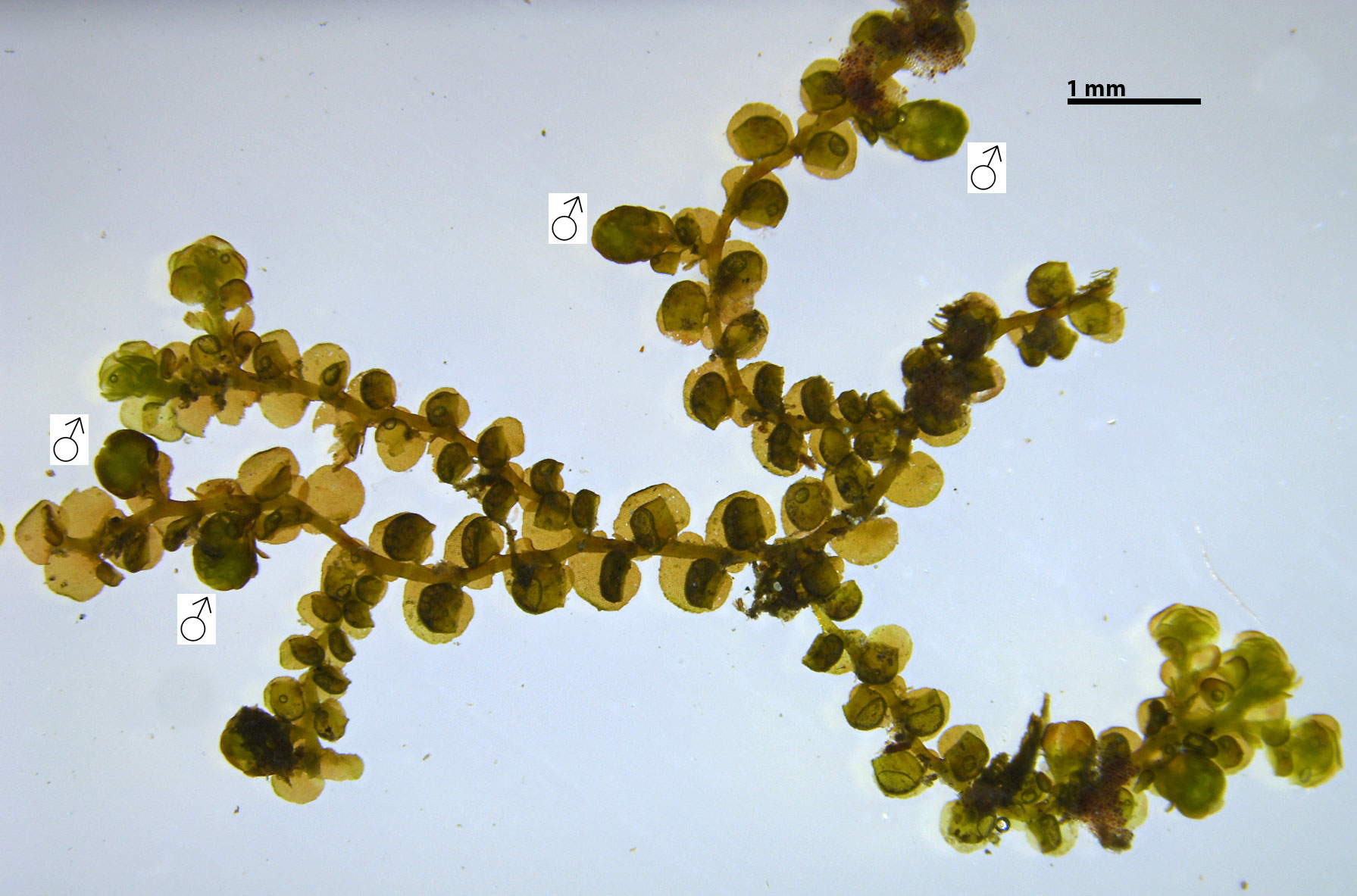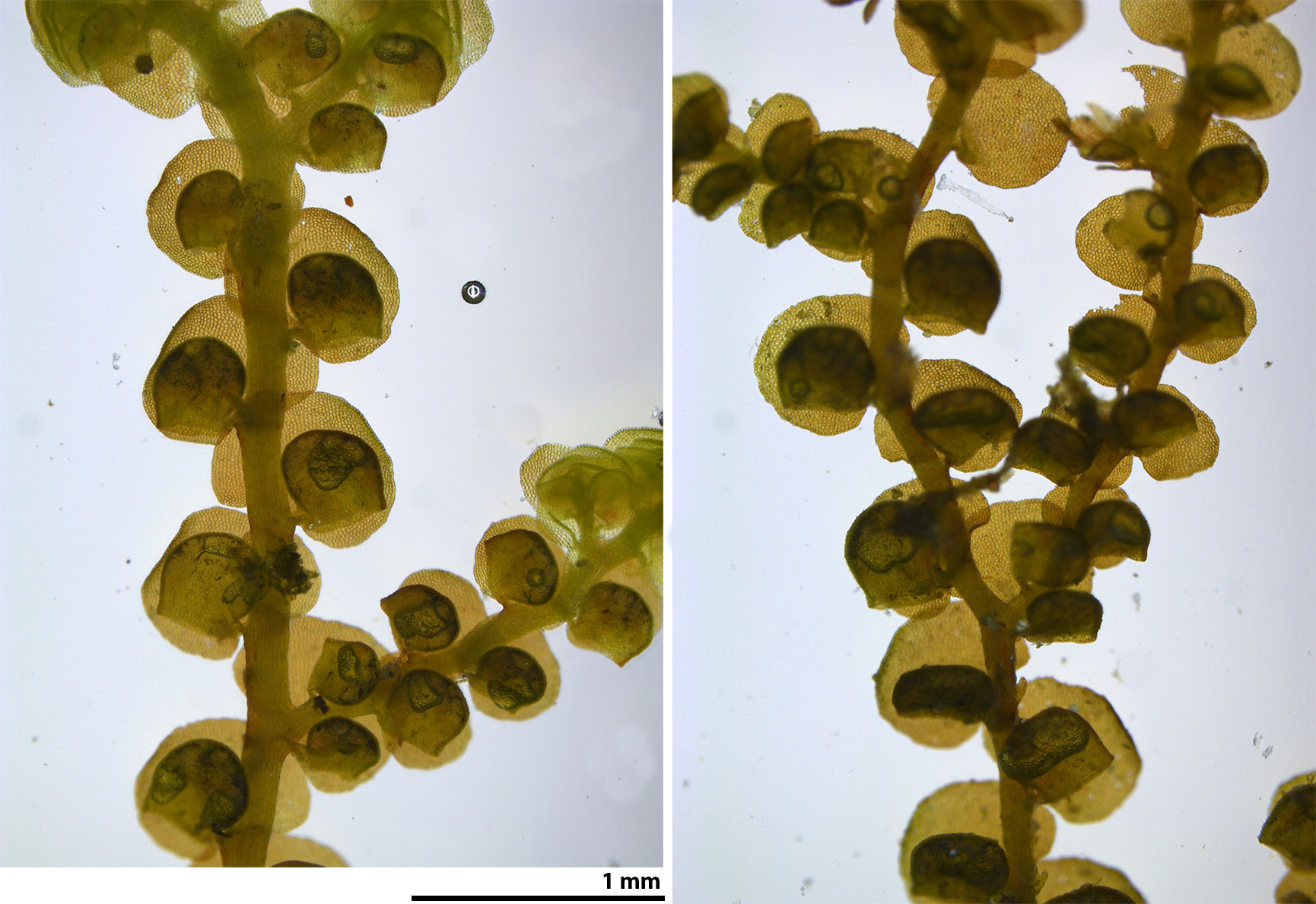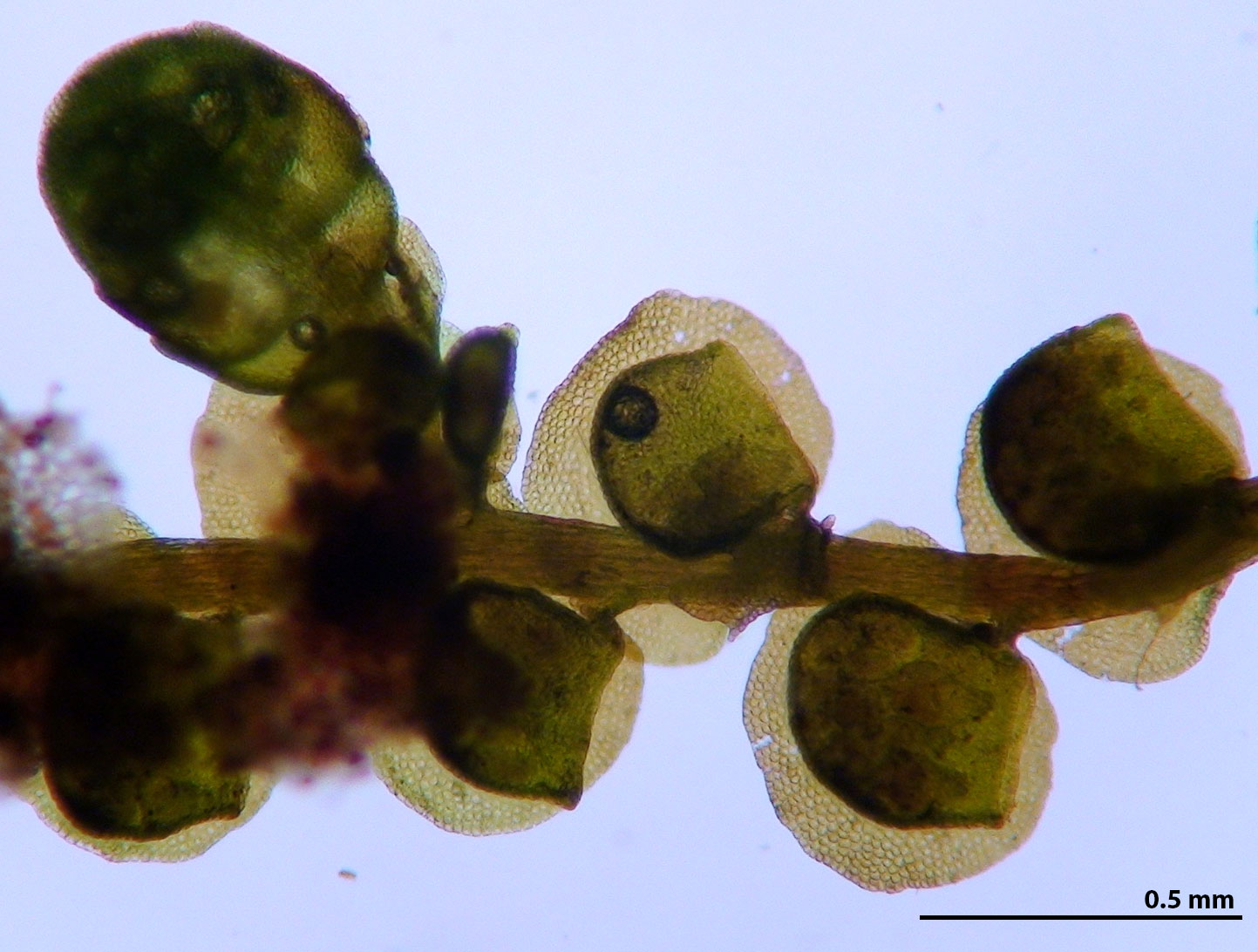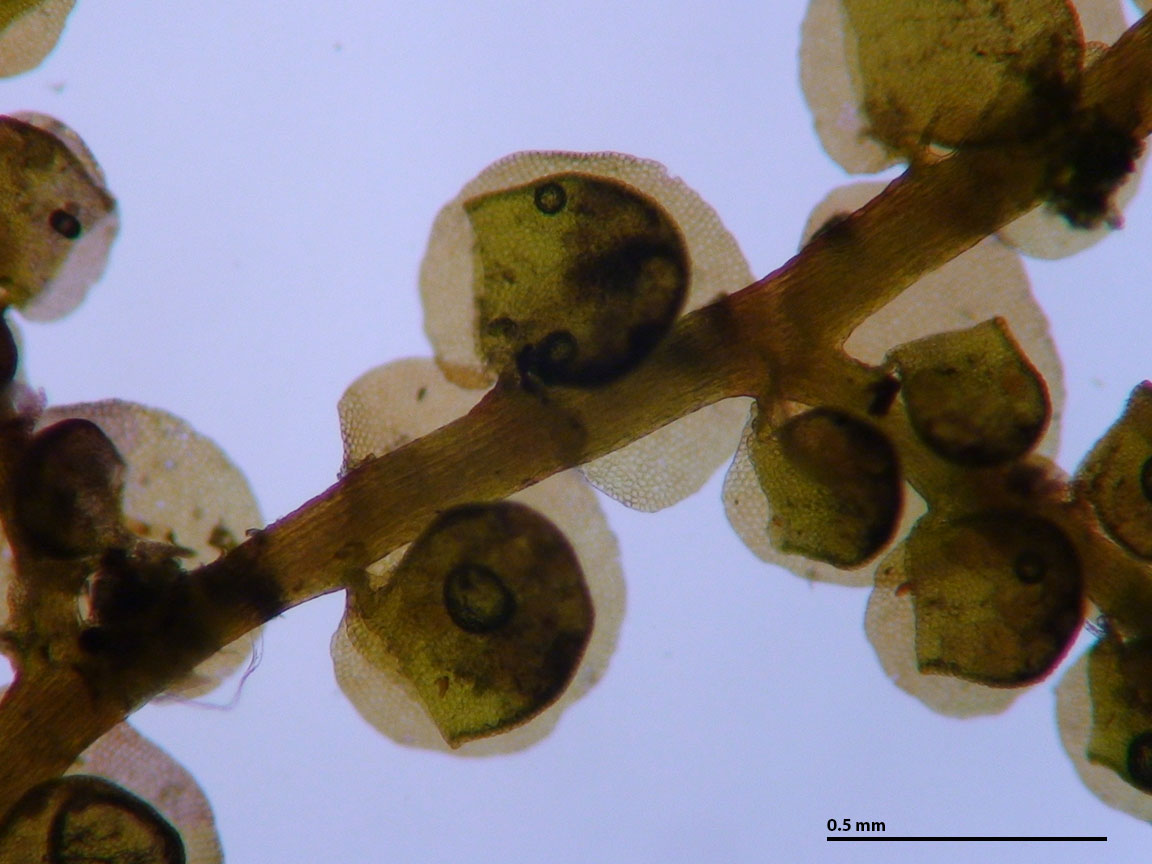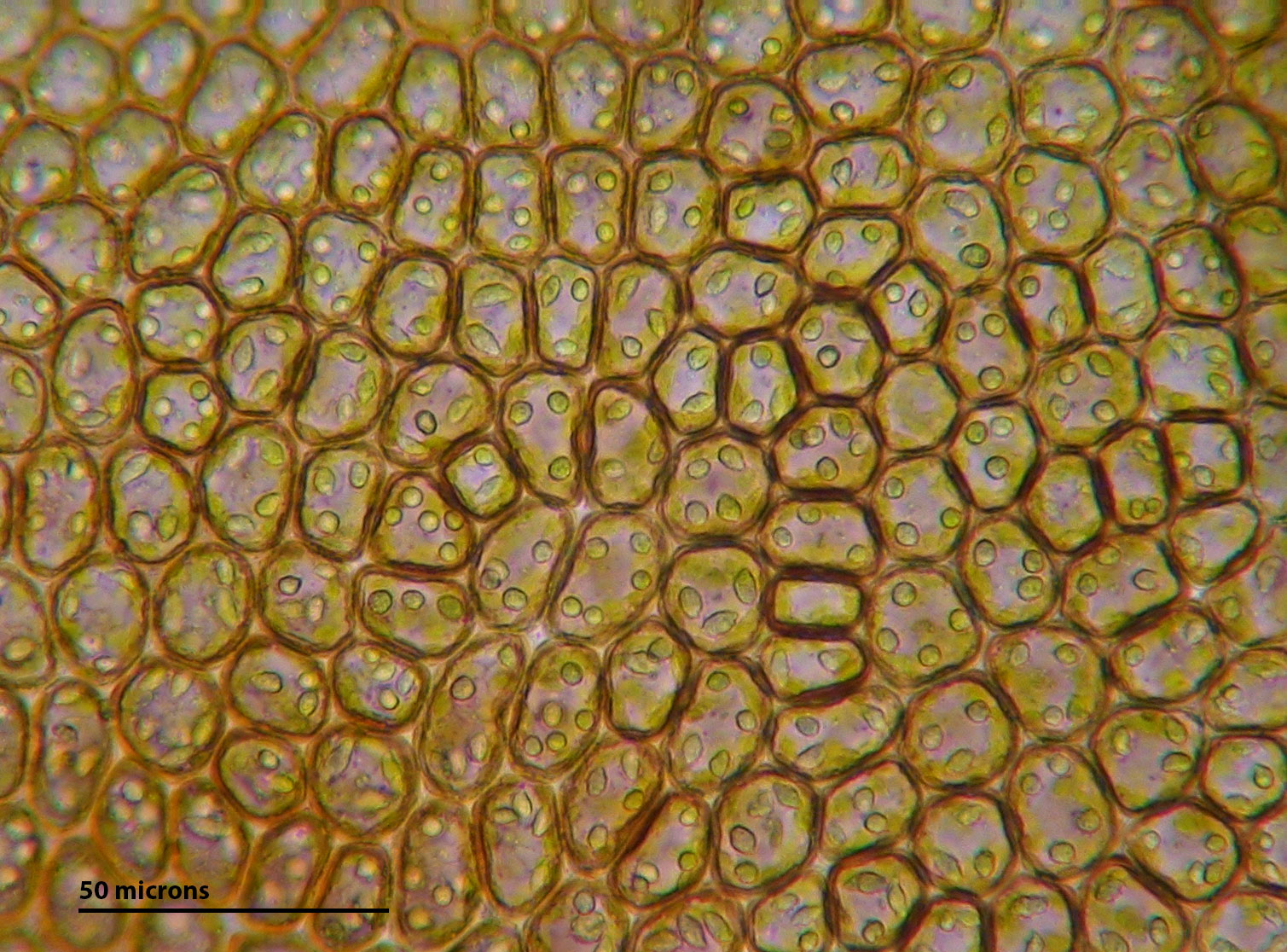Frullania oakesiana Austin
Family: Frullaniaceae
Synonyms
none regionally
NatureServe Conservation Status
G4
Distribution
Europe, Asia, eastern North America, Canada south to North Carolina and Tennessee, in the north, west to the Great Lakes Region
Habitat
Regionally restricted to Fraser fir-red spruce forests at elevations above 5,000 ft. where it occurs on bark of Abies fraseri, Acer spicatum, Sorbus americana, and shrubs "such as Vaccinium, Viburnum cassinoides, V. alnifolium, etc." (Schuster 1992, p. 193).
Brief Description and Tips for Identification
Shoot width: < 1 mm. Color: reddish brown; green in shade forms. Cell walls in leaf lobe: without intermediate thickenings. Dorsal lobe insertion: truncate. Lobules: large, about as wide as long, obscurring well over one-half the dorsal lobe.
Monoicous. Perianth surface without turbercles.
Frullania oakesiana is the only monoicous species of Frullania known to occur in Fraser fir-red spruce forests.
Salient Features
- Monoicous
- large lobules, about as wide as long, consitently obscurring well over half the dorsal lobe
- Cell walls without intermediate thickenings
- Dorsal lobe insertion truncate
- Regionally restricted to high elevation Fraser fir-red spruce forests
F. oakesiana is potentially confused with F. appalachiana based on the large size of the lobules; however, lobule size is highly variable in F. appalachiana and is otherwise a very different plant.
